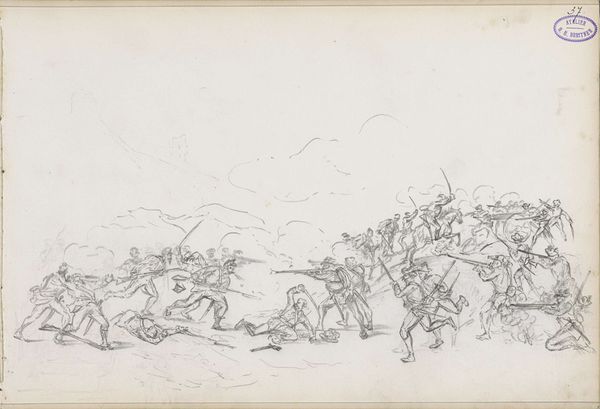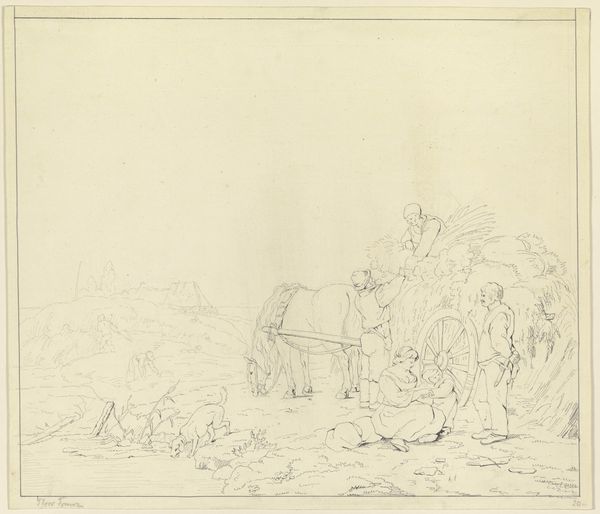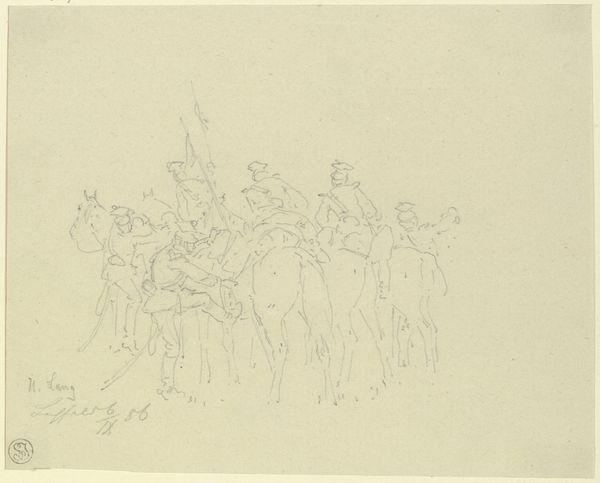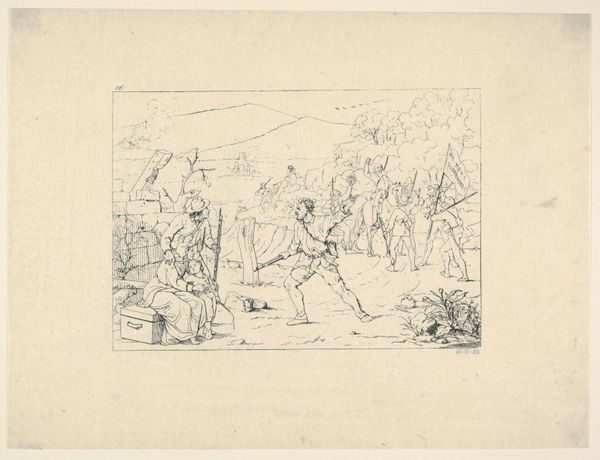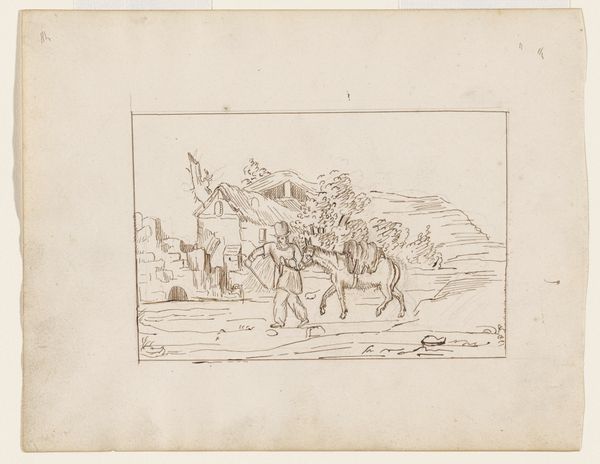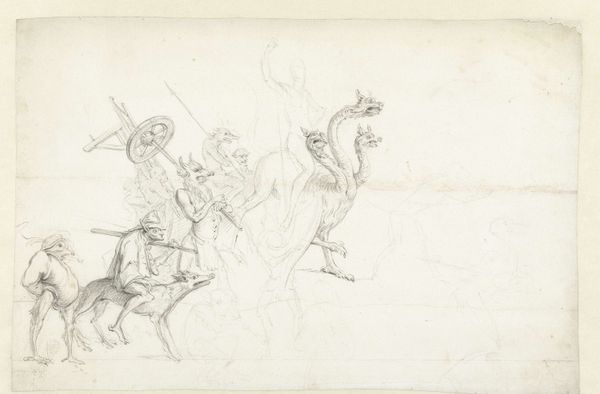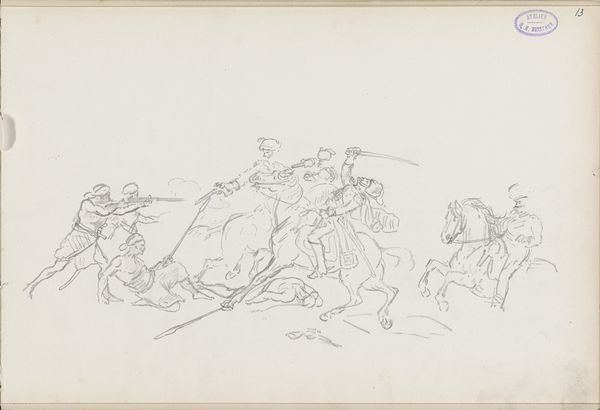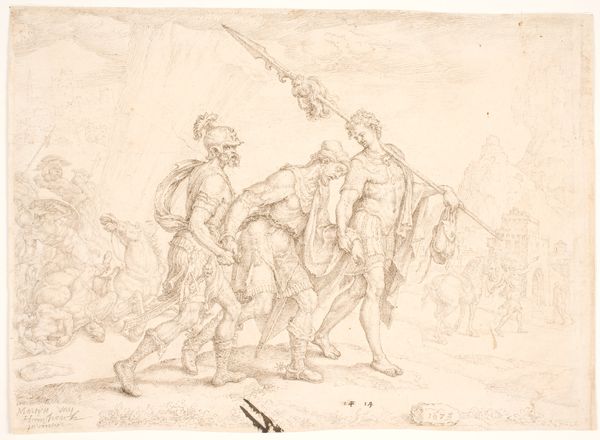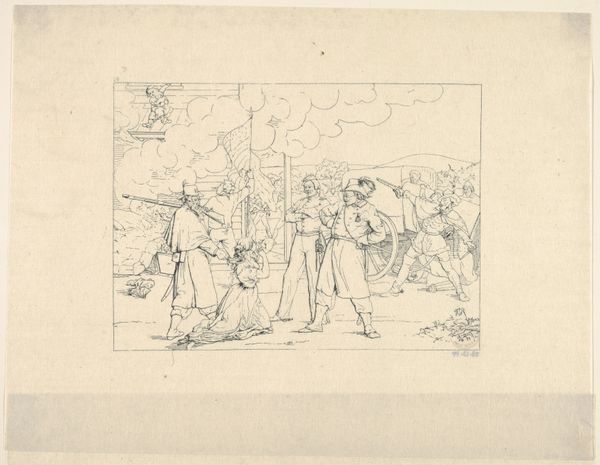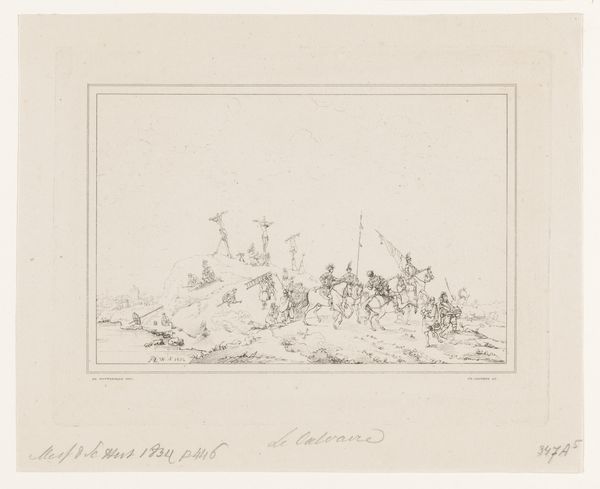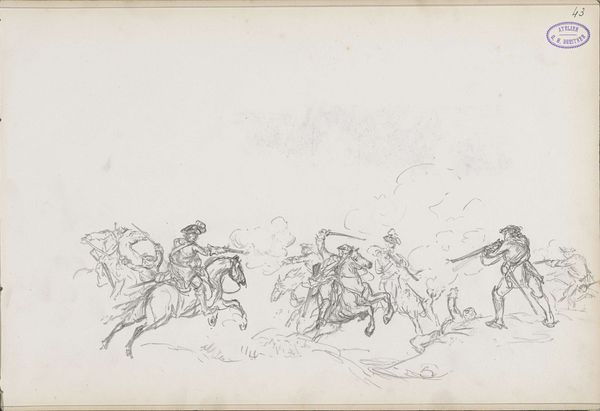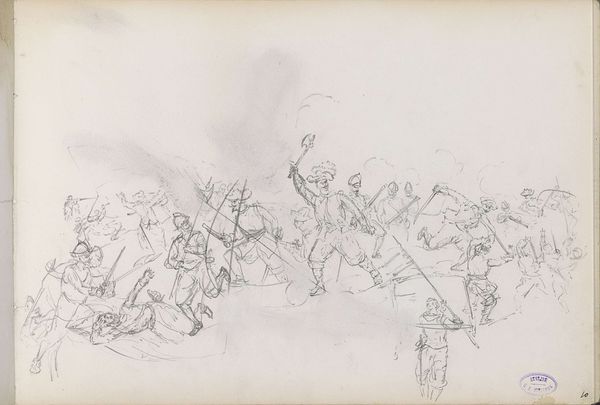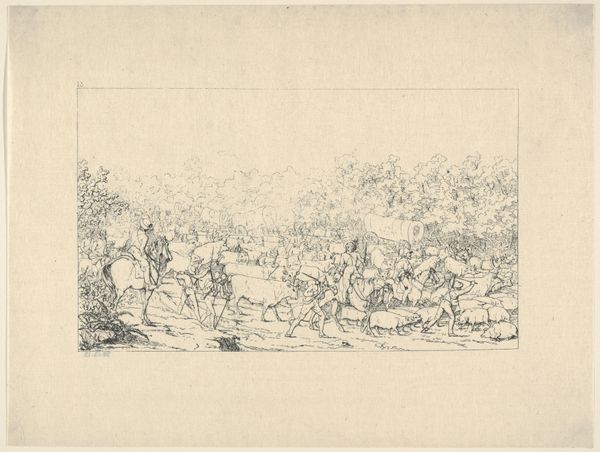
Albert S. Johnston Crossing the Desert to Join the Southern Army (from Confederate War Etchings) 1861 - 1863
0:00
0:00
drawing, print, etching
#
drawing
# print
#
etching
#
war
#
landscape
#
horse
#
men
#
history-painting
Dimensions: Image: 4 3/4 x 7 3/4 in. (12 x 19.7 cm) Sheet: 7 15/16 x 10 3/8 in. (20.2 x 26.4 cm)
Copyright: Public Domain
Curator: Here we have Adalbert John Volck's etching, "Albert S. Johnston Crossing the Desert to Join the Southern Army," created sometime between 1861 and 1863. It’s part of a series known as the Confederate War Etchings. Editor: The overwhelming impression is one of… fragility. The delicate lines, the almost ethereal rendering of the figures against that stark landscape—it feels very distant, like a memory fading at the edges. Curator: The desert setting itself becomes symbolic. Volck, though German-born, was a staunch Confederate sympathizer. This arid landscape underscores the perceived hardship and supposed moral righteousness of the Confederate cause. Johnston becomes almost a Moses figure leading his people. Editor: But think about the labor behind this fragility. The process of etching involves applying acid to a metal plate, each line meticulously drawn through a resistant ground. The fineness we see belies the demanding physical process required to produce this image and print many copies of it. This was designed to be reproduced, disseminated widely as propaganda. Curator: Absolutely, and that’s where the iconographic power comes in. The upraised flag, Johnston's heroic posture – all designed to inspire and solidify Confederate identity, painting the picture of righteous struggle in defense of their values. But it's a highly romanticized vision, devoid of the brutal realities of war. Editor: Which conveniently overlooks the material basis of the Confederacy: enslaved labor. How many hands, forced and unpaid, enabled the society Johnston sought to defend? The absence of that truth within this readily circulated and inexpensive print speaks volumes. It points us back to cotton, agriculture and their networks of distribution: all shaping the conditions in which such imagery could function as potent symbolism. Curator: It serves as a potent reminder of how easily historical narratives can be shaped and manipulated through carefully chosen imagery. Editor: Indeed. A powerful piece, revealing the careful artifice constructed from social materials like politics, race, and economy. It lets us analyze art as embedded within complex systems.
Comments
No comments
Be the first to comment and join the conversation on the ultimate creative platform.
